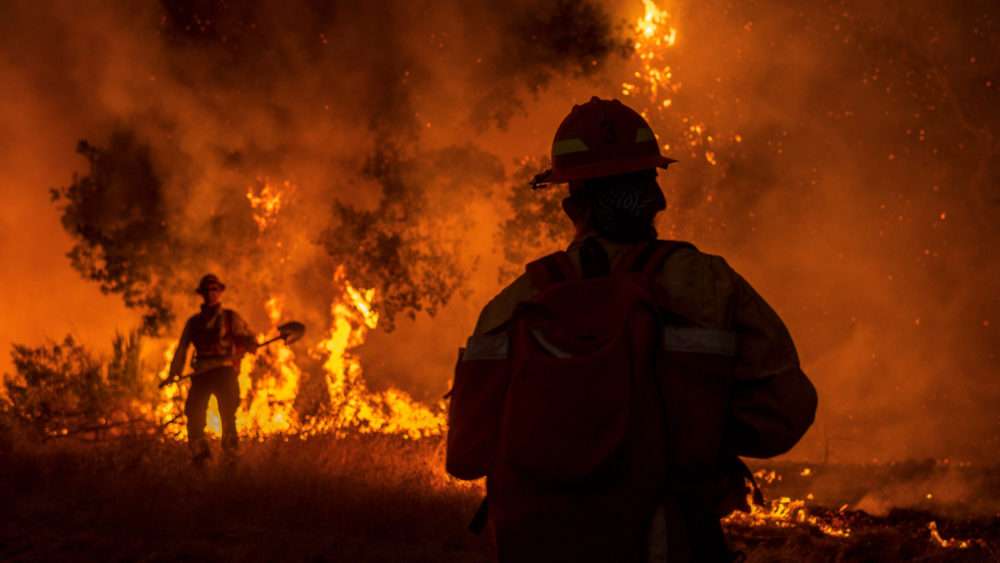Industrial storm water, if not properly handled onsite, can contribute to pollution in our waterways.
 Last year at about this time [“Industrial Storm Water Permitting Changes,” Readers Speak Out, July 2014], I wrote about the April 1, 2014 adoption of the new Industrial Storm Water General Permit (IGP). This column is to remind you we’ve come to the July 1, 2015 deadline for implementing all the changes. You can find he IGP here.
Last year at about this time [“Industrial Storm Water Permitting Changes,” Readers Speak Out, July 2014], I wrote about the April 1, 2014 adoption of the new Industrial Storm Water General Permit (IGP). This column is to remind you we’ve come to the July 1, 2015 deadline for implementing all the changes. You can find he IGP here. As a refresher, the IGP permits certain industries to discharge industrial storm water. Industrial storm water is rain that falls on an industrial facility. Specifically, it’s rain water that makes contact, or has the potential to make contact, with the industrial processes and materials of that facility and then discharges or runs off the facility. Industrial storm water, if not properly handled onsite, can contribute to pollution in our waterways, such as the Russian River, Sonoma Creek, Napa Creek, Novato Creek and many more.
My company, many of my colleagues in the industry and permit holders have been busy the past few months assisting or recertifying the notice of intent (NOI), preparing revised storm water pollution prevention plans or SWPPPs (rhymes with slips) and making improvements in their best management practices (BMPs). California’s State Water Resources Control Board has also been busy providing workshops throughout the state on the new changes. We had two workshops in Santa Rosa during March and April. The curriculums for the new Qualified Industrial Stormwater Practitioner (QISP) and QISP Trainer of Record (TOR) are nearing completion. The first QISP courses should be available in fall 2015, while the QISP TORs will be in June. The TORs are the folks who provide the training for the QISPs.
For more general information regarding the IGP, please refer to my previous article. In this column, I’d like to discuss BMPs.
There are two types of BMPs in the IGP: minimum and advanced. Minimum BMPs consist of good housekeeping; preventive maintenance; spill and leak prevention response; material handling and waste management; erosion and sediment controls; employee training programs; and quality assurance and recordkeeping. Advanced BMPs are in addition to minimum BMPs and include exposure minimization (storm-resistant shelters); storm water containment and discharge reduction (diversion, infiltration, reuse, containment, retention or volume reduction); and treatment control (mechanical, chemical or biological systems).
We’ll examine the minimum BMPs, which must be implemented to the “extent feasible,” or one may be in violation of the permit.
Of the seven categories included in the minimum BMPs, good housekeeping might be the best category to make improvements, which will help a site stay in compliance. Here are a few to consider.
Identify debris, waste, spills, tracked or leaked materials. These need to be cleaned and disposed of properly.
Minimize and prevent material tracking. Tracking occurs when industrial material temporarily adheres to vehicle tires or employee shoes and then falls off outside of the buildings or on roadways.
Minimize dust generation from industrial materials or activities. Materials or activities susceptible to becoming airborne, such as dust, smoke or other particulates, can migrate on or off the facility and reach water conveyances.
Surfaces impacted by rinse and/or wash waters must be cleaned as soon as possible. A wash rack for vehicle cleaning is an example of where rinse water must be controlled, contained and properly disposed of.
Minimize contact of authorized non-storm water with industrial areas. Fire hydrant testing, for example, cannot contact an industrial activity or area. Once in contact, that water is no longer authorized to be discharged.
Contact of storm water run-off from a non-industrial area, such as employee parking within industrial areas, must be minimized.
Containment of all stored non-solid industrial materials or wastes (particulates, powders, shredded paper) is required if the materials can be transported or dispersed by wind or contact with storm water.
Be sure to carefully read the section on BMPs in the IGP for more information. Your SWPPP should accurately document the BMPs you’re implementing at your facility.
The requirement to implement BMPs “to the extent feasible” requires the permit holder to select, design, install and implement BMPs that reduce or prevent discharges of pollutants in its storm water discharge in a manner that reflects best industry practice considering technological availability and economic practicability and achievability. Be sure to document how you determined your implemented BMPs to the extent feasible. In other words, be sure you can back up your claim.
Good luck with the new permit.
Art Deicke is owner of Environmental Pollution Solutions, LLC, based in Santa Rosa, and member of CASQA, IGPTT and certified as a CPSWQ, QSP and QSD (www.epsh2o.com). He also chairs the Santa Rosa Chamber of Commerce Energy and Natural Resources Task Force.



